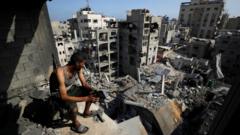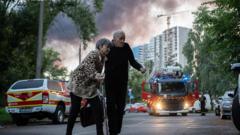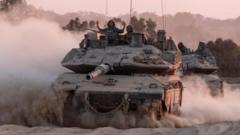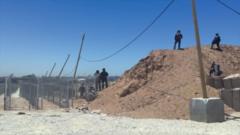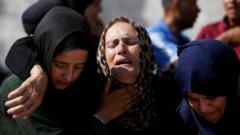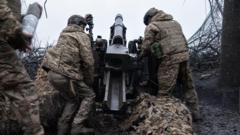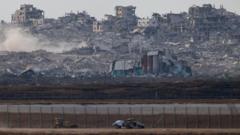Amid the ongoing conflict in Gaza and the release of hostages held by Hamas, the International Committee of the Red Cross (ICRC) coordinates intricate and secure operations to ensure their safe return to families, highlighting the complexities and emotional weight of these exchanges.**
The Complex Journey of Hostage Rescues: A Close Look at Operations in Gaza**
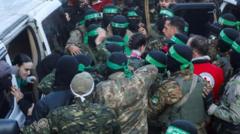
The Complex Journey of Hostage Rescues: A Close Look at Operations in Gaza**
The ICRC plays a pivotal role in the delicate operations to safely return Israeli hostages from Gaza, amid ongoing tensions and meticulous planning.**
Inside the harrowing efforts to secure the release of Israeli hostages from Gaza, the International Committee of the Red Cross (ICRC) plays a crucial role, operating under rigorous security protocols to ensure the safe return of captives. The process begins with clandestine calls detailing locations where hostages are to be picked up, often requiring multiple vehicles emblazoned with the ICRC emblem for humanitarian identification.
Since the outbreak of conflict on October 7, 2023, a significant death toll has ensued on both sides—over 1,200 Israelis dead and 251 hostages taken by Hamas, while more than 47,000 Palestinians have reportedly died in Gaza amidst extensive Israeli airstrikes. A ceasefire established on January 19 encompasses a deal whereby 33 Israeli hostages are set to be released over a six-week window, with the exchange involving hundreds of Palestinian prisoners currently held in Israeli facilities.
ICRC spokesperson Sarah Davies emphasizes the multifaceted nature of these operations, mentioning how they require advanced planning to navigate various risks, such as unexploded munitions, unstable infrastructure, and the presence of emotional crowds. “Operations of this nature demand utmost caution; any misstep could lead to hostages remaining captive or reigniting conflict,” she notes.
Amidst the delicate negotiations, Hamas has been known to widely disseminate information about hostages on platforms like Telegram, although the specifics regarding the handover locations tend to remain closely guarded. Witnesses in Gaza have reported large crowds gathering at designated venues, where Hamas fighters have organized predetermined areas for the exchanges to occur, showcasing scenes of mixed sentiment ranging from relief to festive celebrations.
Once released, hostages are transferred to the care of the Israel Defense Forces (IDF), where medical staff and social workers assist in their recovery process. Col Dr. Avi Banov, an IDF medical officer, shares that initial medical evaluations are crucial—many released hostages have suffered physical injuries and psychological trauma. Post-exchange, hostages are transported by specialized helicopters to medical facilities for further care.
The ICRC's involvement focuses on the dignity and well-being of those freed, ensuring that every measure is taken to protect them during the transition back to their families. As exchanges continue, the emotional and physical ramifications on hostages are profound, with preparations underway for both reunions and the potential arrival of the deceased among the hostages.
As complex logistics adapt to the dynamic landscape of Gaza’s conflict, these operations exemplify the urgent humanitarian need amid a backdrop of political strife. The return of hostages is more than just logistics; it represents hope and the relentless human spirit striving for safety and familial connections amidst conflict.

